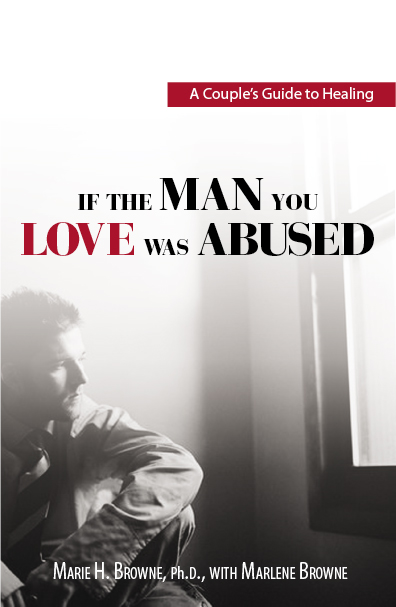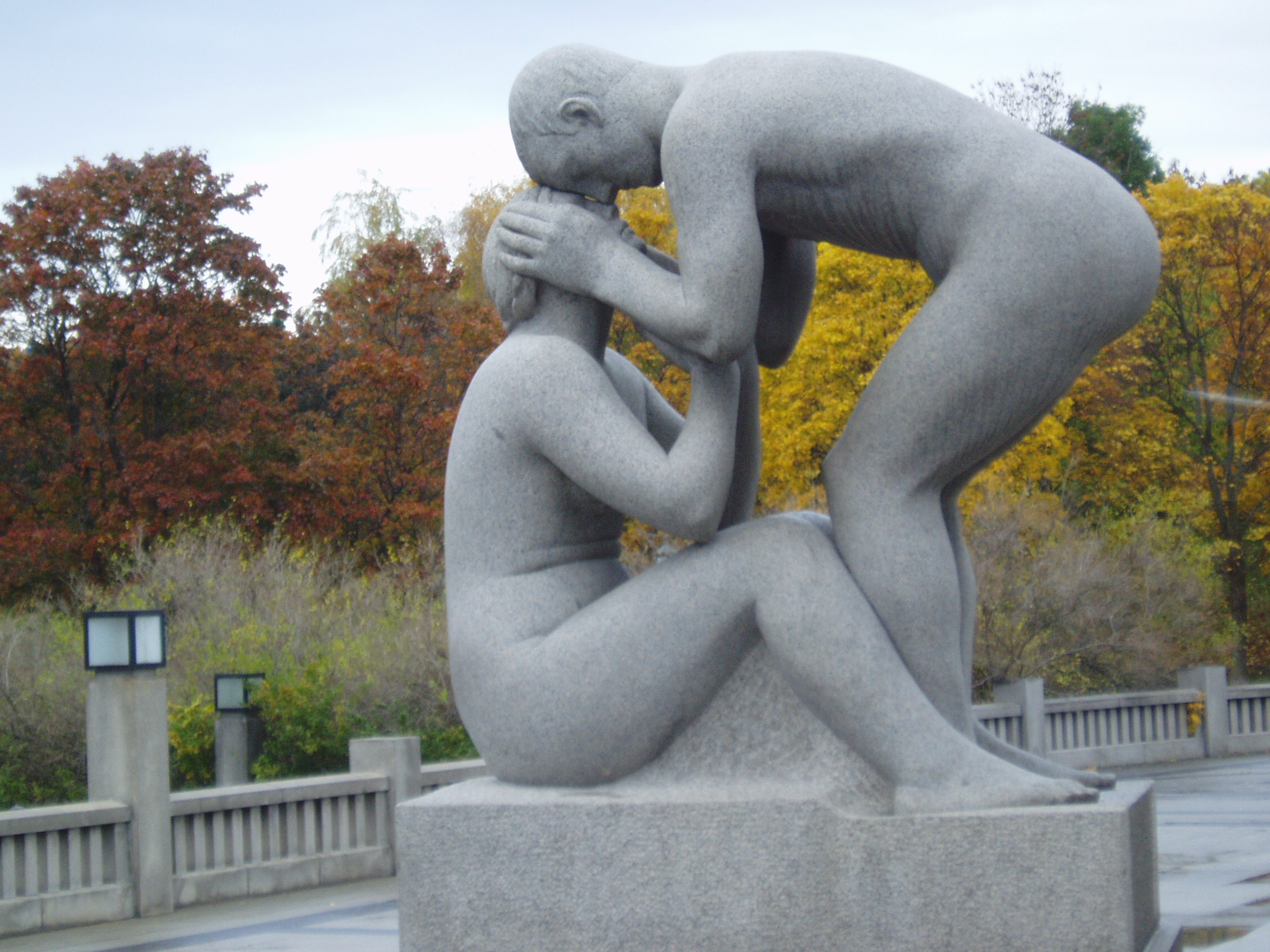|
|
If the Man You Love Was Abused
By: Marie H. Browne, R.N., Ph.D. (with Marlene M. Browne, Esq.) Part One: Defining the Issue, Assessing the Damage Chapter 1: Abuses That Can Leave a Scar
Part Two: A Partner in His Healing Chapter 8: Looking in the Mirror
Part Three: The Legacy of Abuse Chapter 13: Fatherhood and Children
GLOSSARY | ||||||||||||||||||||||||||||||||||||||||||||||||||||||||||||||||||||||||||||||||||||||||||||||||||
|
Introduction
The genesis and intention of this book is to enlighten, educate and, perhaps, most important, encourage the woman who is in the delicate, extraordinary, and possibly heart-breaking position of being in a relationship (married, or not) with a man who—she comes to learn, or suspects—was abused. As a practicing psychologist for almost four decades, and teaching college students for nearly that long, I’ve had the opportunity and privilege to work with women in that position—your position; as well as men, like your partner, who endured child abuse. Whether that abuse was psychological, physical, or sexual (and you will see, Chapter One is devoted to discussing the characteristics of each), I found that these men, and their partners, suffered the effects of that trauma, long after it occurred.
When my practice began, the feminist movement was in full swing and bringing national (in fact, international) attention to the victimization of women and girls—at all ages and stages of life. As a result of these efforts, psychologists, social scientists, and medical personnel devoted their time and some, their careers, to studying the effects of female exploitation, and the consequences of that abuse from the cradle to the grave. Books were written, seminars were held, and professional associations were formed to inform the public how females are subjected to, and affected by, abuse and why special social support for these victims was crucial if they were to recover from their trauma. As a result, concerned citizens joined the band-wagon, and lobbied federal and local politicians to make resources available to females who were being abused, or had been abused as kids.
By the 1980s, nearly every mental and physical health care provider was aware that child abuse was a substantial factor in the lives of many of the girls and women seen in treatment. While the word was out that girls were at risk for abuse, the boys continued to suffer without a voice, without recourse, and without a cultural understanding of how commonly they too, were victimized. At that time, most lay people—and unfortunately, many mental and physical health professionals—remained grossly, dangerously, and recklessly unaware of boys’ exposure to abuse and its effects on their emotional, physical, and psychological well-being. But times were changing and the topic of abuse was about to explode once again upon the collective consciousness of the country.
As you probably know from all the media coverage beginning in early 2002, the world’s view about boys and their susceptibility to exploitation began to change with the revelation of the tragic truth about the clergy abuse scandal. John Jay College of Criminal Justice documented the extent of this disgraceful epoch of the Church in its ground-breaking 2004 study, The Nature and Scope of Sexual Abuse of Minors by Catholic Priests and Deacons in the United States 1950-2002, which confirmed that thousands of children (81 percent of whom were boys, mostly adolescents) were abused by their trusted, respected parish priests. We also know that many in the Church were aware of the problem, but turned a blind eye toward the pedophiles and, more tragically, their young victims, over the course of decades. In fact, perhaps one of cruelest ironies of all is that just as the women’s movement reached the height of its power in the 1970s, telling the world about how girls were being abused, the abuse of young boys in the Catholic Church surged to its highest levels in fifty years.
Meanwhile, on the academic front, more researchers were studying the frequency and effects of child abuse on both boys and girls. Results of this work demonstrated that boys suffered from abuse just as profoundly, if not more, than the girls did, and, much more frequently than anyone ever expected. In fact, a noteworthy Centers for Disease Control and Prevention (CDC/ACE) study released in 2005, confirmed the results of research conducted fifteen years earlier revealing that 16 percent of boys in the US (that’s one in six) are abused in some way. What’s more, the 2005 study revealed that almost 40 percent of the perpetrators of boy abuse were females. Today, some experts advise us that the 16 percent frequency figure for boys being abused (i.e., one in six) is inaccurate and too low, suggesting instead it’s reasonable to assume that just as many boys are abused as girls (25 percent according the CDC). These professionals believe that this under-estimation occurs because males under-report their abuse, reluctant to reveal their experiences for all the reasons discussed in this book. What’s more, some men will not identify their abusive experiences as such, preferring to label the events as “hazing” or “horseplay” (when perpetrated by males) or as early initiations to sex (when perpetrated by females—unless the perpetrator was mother, in which case, the consequences are often dire and damaging if the child is not helped).
Now, in the opening decade of the twenty-first century, we now know that there are many men out there today who are among the walking wounded as a result of their abusive treatment, unaware of how to deal with their abuse in a way that will allow them to lead fulfilling lives, with the ability to trust, be intimate, and have personal peace. My aim in writing this book is to disseminate all the information that’s been gathered in recent years to help you, the significant other, understand the dynamics of abuse, from a man’s—or a boy’s—point of view, and, in doing that, help your mate find healing.
Reading this book, you will learn that no one is exempt from the risk of being abused as a child (though there are factors that make one more or less at risk). You’ll learn about the different types of abuse and the pedophiles who perpetrate these crimes, including why they prey upon children, and how they often enter their homes, locker rooms, rest rooms, shopping malls, parks, schools, and playgrounds without arousing anyone’s suspicion or mistrust. You will gain knowledge about the “grooming” process and how abusers effectively use the “trauma bond” on their victims, forged by intimidation, fear, guilt, and shame, so they keep “the secret” or “promise not to tell”—or else.
You’ll learn about the bio-psycho-social effects of child abuse on your partner, giving you first hand knowledge and further insight into the cause of the current behaviors that you and your loved one might be dealing with as adults. You’ll learn all the reasons your mate might find it difficult to have a warm, trusting relationship with you, or any one else, as a mature man. (Imagine: If your parents or a trusted adult took advantage of you and abused you, you might have difficulty giving your trust to another too.) You will learn what techniques work best in treatment and, you’ll even read about other famous victims who have come forward to tell their stories, offering you (and vicariously, your partner) fellow survivors’ perspectives upon being abused as boys. Finally, you will discover the approaches that will give your mate the emotional, and perhaps get him the professional, support that will make it easier for him to deal with his past, and ultimately, pave the way for a less painful and more gratifying future, for both of you.
Most chapters are punctuated with case studies from my practice, providing you with concrete examples of how abuse issues present themselves in “real life” and, more important, how they can be addressed and resolved by you and your partner in your life, at your pace. As a final technical point, you will notice that throughout the book, I alternate the words “abuse” and “trauma” to refer to the event in your partner’s past that caused him injury. Similarly, I interchange the terms “victim” and “survivor” in the text to indicate an adult (like your partner) who has been abused or traumatized. While I recognize that your partner might not see himself as a victim (or, a survivor, for that matter); I use these expressions as they appear in the professional literature on the subject of child abuse and its consequences on the people who experienced it. For your handy reference, you’ll also find a glossary full of psychiatric, medical, and even legal jargon bearing upon the subject of abuse and that appear throughout the book. After the glossary, you’ll find a list of the references I’ve used—in my professional life, generally, and in writing this book, specifically—broken down according to chapter, and on occasion, verse. A list of suggested resources for your use, again separated by chapter for your convenience and ease, follows the references.
I want you to know that professionals who work with male victims agree that in most cases (80 percent), with care and emotional, social, and psychological support, your mate will be a “thriver,” able to address and resolve the abuse of his past and the concerns and challenges it has caused him, and of course, you. In the meantime, I hope my words and research gathered here provide you and your partner with the first steps towards your journey of healing, with fulfillment, trust, and contentment to follow.
Available now Click here. | |||||||||||||||||||||||||||||||||||||||||||||||||||||||||||||||||||||||||||||||||||||||||||||||||||
|
©2004-2015. Marie H. Browne, Marlene M. Browne. All rights reserved. | |||||||||||||||||||||||||||||||||||||||||||||||||||||||||||||||||||||||||||||||||||||||||||||||||||

